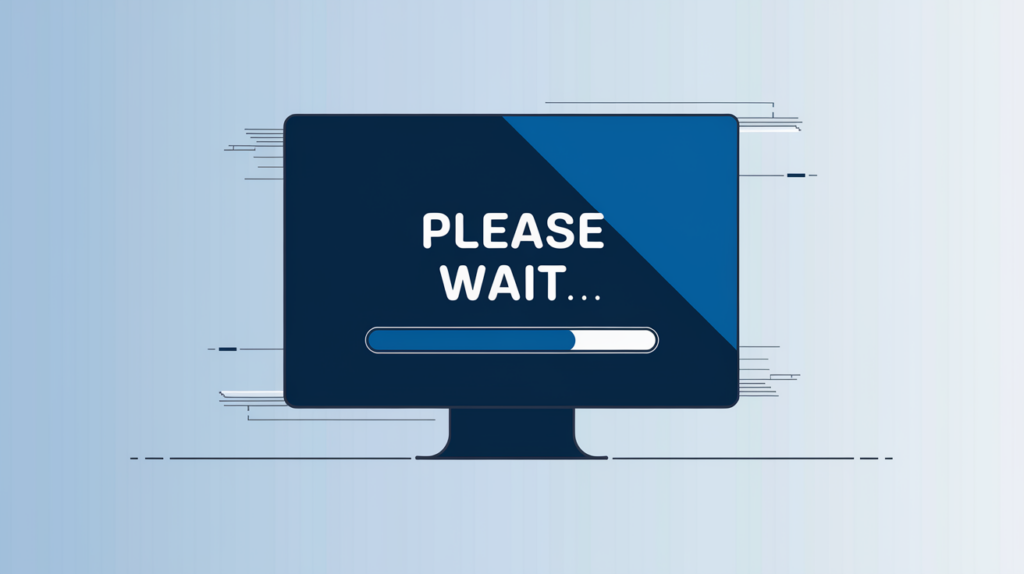
Ever landed on a website and felt like you were waiting forever for the main content to show up? That’s where the Largest Contentful Paint (LCP) comes in. It’s not just a fancy tech term – it’s all about making sure users don’t bounce off your site before they even see what you have to offer.
What’s LCP All About?
LCP is one of Google’s Core Web Vitals, a metrics set that measure your website is user-friendly. Specifically, LCP tracks how long it takes for the largest content element on your page to load. This could be an image, a video poster, or a chunk of text – basically, whatever catches the user’s eye first.
Google says a good LCP score is 2.5 seconds or less. Anything slower, and you might be testing your visitors’ patience.
Why Should You Care?
- User Experience: Fast-loading content keeps visitors happy and engaged.
- SEO Benefits: Google considers LCP when ranking sites, so a good score could give you an edge.
- Conversion Rates: Quicker load times often lead to better conversion rates.
Breaking Down LCP
LCP isn’t just one measurement – it’s made up of several components:
- Time to First Byte (TTFB): How quickly your server responds to a request.
- Resource Load Delay: The time it takes for the browser to start downloading the main content.
- Resource Load Duration: How long does it take to actually download the content?
- Element Render Delay: The time needed to process and display the content.
How to Boost Your LCP Score
Optimize Your Server
- Choose solid hosting with integrated CDN and caching.
- Fine-tune your database queries.
- Implement efficient server-side rendering.
Speed Up Resource Loading
- Use modern image formats like WebP.
- Correctly size your images.
- Prioritize loading for important content using fetchpriority=”high”.
- Inline critical CSS to avoid render blocking.
Streamline Your Code
- Minimize render-blocking resources.
- Optimize your HTML, CSS, and JavaScript.
- Consider implementing speculation rules API for faster internal navigation.
Watch Out for Common Pitfalls
- Be aware that off-screen elements that shift into view might not count for LCP.
- Elements that start in view but get pushed off might still be counted.
Measuring Your LCP Score
You’ve got two types of tools at your disposal:
- Field Tools: These measure real user interactions with your site.
- Lab Tools: These simulate typical conditions to give you a score.
For a quick check, you can use Chrome DevTools’ Performance report to identify LCP resources and their load times.
The Bottom Line
Optimizing LCP is crucial for creating a fast, user-friendly website that keeps visitors engaged and potentially ranks better in search results. While we’ve covered the basics here, each component of LCP has its own nuances and optimization techniques.
Remember, a good LCP score isn’t just about ticking a box – it’s about creating a better experience for your users and potentially boosting your site’s performance in search rankings.
Need help optimizing your website’s LCP and other Core Web Vitals? At 42Works, we specialize in fine-tuning websites for peak performance. Our team of experts can help you navigate the complexities of LCP optimization and ensure your site delivers the speed and user experience that today’s web users demand. Get in touch with us today to take your website’s performance to the next level!
FAQs About Largest Contentful Paint (LCP)
- What is Largest Contentful Paint (LCP)?
LCP measures how long it takes for the largest visible content (like an image or text block) to load.
- What is a good LCP score?
A good LCP score is 2.5 seconds or less, ensuring users don’t experience delays.
- What are the main factors affecting LCP?
Time to First Byte (TTFB), resource load delay, resource load duration, and element render delay.
- How can I improve my LCP score?
Optimize server response times, use modern image formats, inline critical CSS, and streamline your code.
- How do I measure LCP?
Use tools like Chrome DevTools, or field tools that measure real user data.
- Can 42Works help with LCP optimization?
Yes, 42Works specializes in optimizing LCP and other Core Web Vitals for better site performance.


